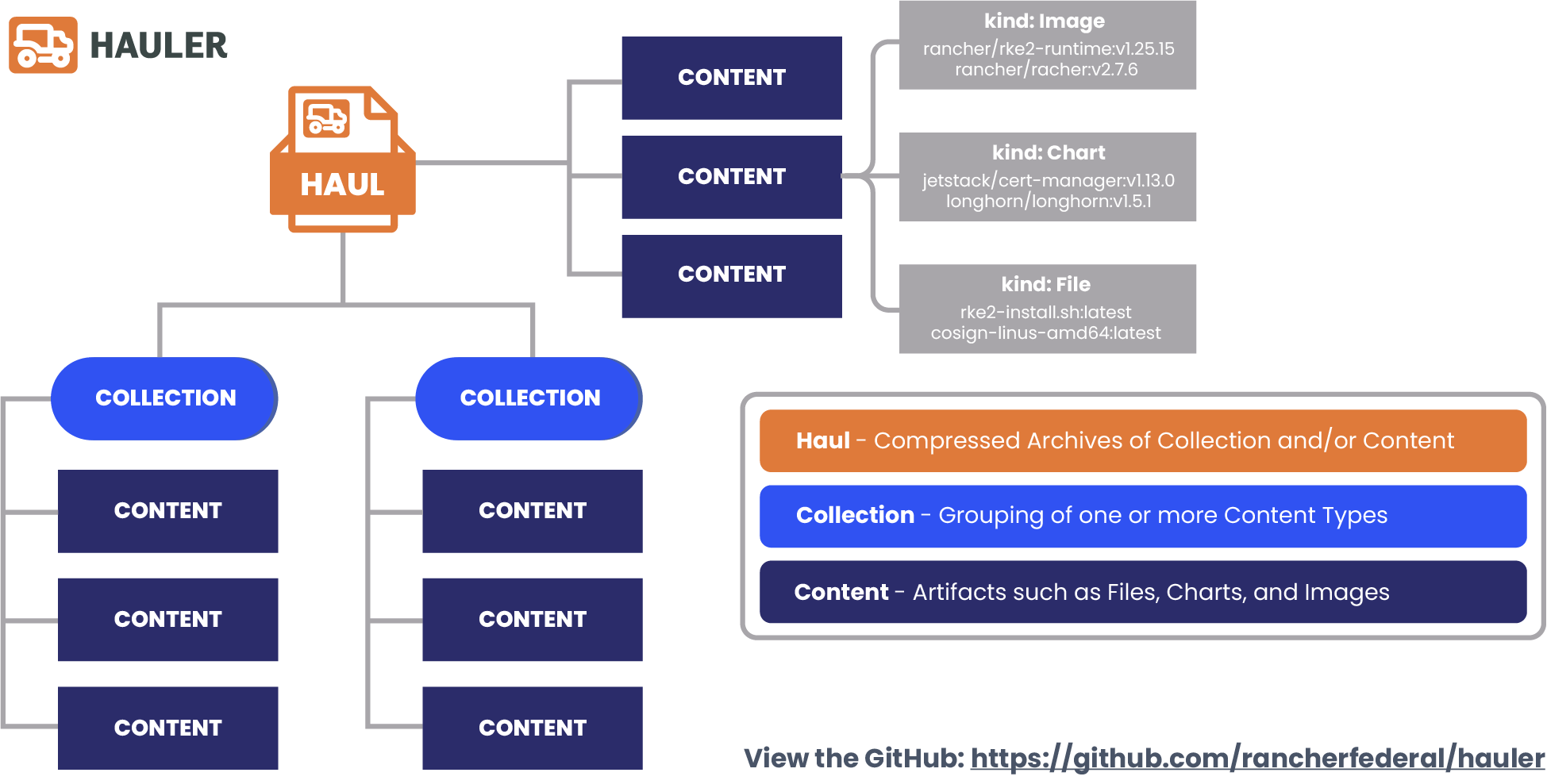Core Concepts

Haul
Hauls are Compressed Archive (Tarball) of Hauler Collections and Content.
At the heart of Hauler lies the concept of a Haul. A Haul is a compressed archive, often in the form of a tarball, containing Hauler collections and content. It serves as a container for grouping and transporting various data types, making it a fundamental element in the Hauler ecosystem.
Collections
Collections are Grouping of one or more Hauler Contents.
Collections are the building blocks of Hauler. These are groupings of one or more Hauler contents. Think of collections as organized sets of data that collectively represent something desirable.
Community Collections
While collections (and contents) are built into Hauler, our goal is to empower operators to define their own collections. This way, you can tailor Hauler to your unique requirements and take full control of your artifacts.
RGS Carbide Collections
Hauler provides the ability to import collections for the Rancher products, making it seamless for RGS Supported Customers to airgap any of the Rancher products or projects. If you haven't heard of Rancher Government Carbide, check it out here!
Content
Contents are Artifacts such as Images, Charts, or Files.
In Hauler's terminology, content refers to artifacts such as container images, helm charts, or files. These are the fundamental types of artifacts for Hauler. To understand it a little bit better, let's break it down:
Content: The fundamental type of artifacts that Hauler recognizes (images, charts, and files).Artifact: Anything that can be represented as an OCI (Open Container Initiative) Compliant Artifact.- OCI Compliant Artifacts provide a standardized way to store arbitrary files, making it easier to manage content efficiently.
Declarative Content
While manually adding content to Hauler is an easy way to get started, there is a more sustainable approach... Hauler provides a declarative and programmatic approach by allowing operators to define content within a configuration file, known as a manifest. This approach ensures a more reproducable workflow for managing the lifecycle of your hauls. Check it out here!